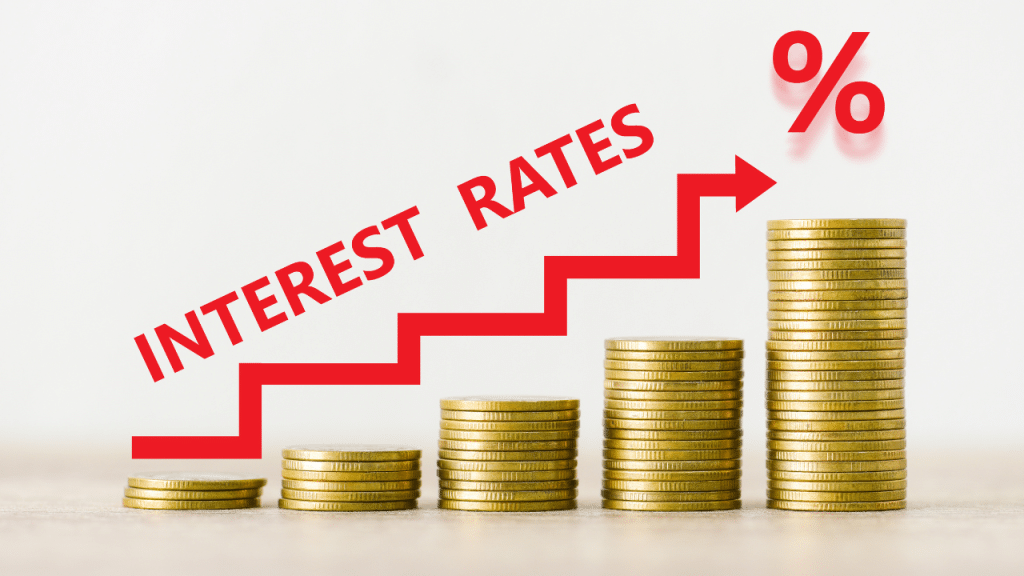In today’s fast-paced world, owning a bike is not just about convenience; it’s a lifestyle choice. Whether you ride for leisure or commute daily, protecting your two-wheeled companion with the right insurance coverage is crucial. In this comprehensive guide, we delve into the intricacies of bike insurance, providing you with valuable insights to make informed decisions.
Understanding Bike Insurance
Bike insurance, also known as motorcycle insurance, is a financial product that provides coverage against damages, theft, or third-party liabilities involving your motorcycle. It typically consists of several components, including third-party liability, own damage, and personal accident cover.
Here are some key points to understand about bike insurance:
- Coverage Options: Bike insurance typically offers different types of coverage, including:
- Liability Coverage: covers any property damage and personal injury you may cause to other people in the event of an accident.
- Collision Coverage: Pays for damage to your bike resulting from a collision with another vehicle or object.
- Comprehensive Coverage: Covers damage to your bike from incidents other than collisions, such as theft, vandalism, fire, or natural disasters.
- Uninsured/Underinsured Motorist Coverage: Protects you if you’re involved in an accident with a driver who doesn’t have insurance or doesn’t have enough insurance to cover your expenses.
- Medical Payments Coverage: covers medical costs incurred in the event of a motorcycle accident, regardless of fault.
- Premiums: The cost of bike insurance premiums depends on various factors, including the type of coverage, the value of the bike, your age, riding experience, driving record, and where you live. Generally, bikes with larger engines or higher values will have higher premiums.
- Deductibles: The amount you agree to pay out-of-pocket prior to the start of your insurance coverage is known as your deductible. Choosing a higher deductible can lower your premiums but means you’ll pay more if you make a claim.
- Legal Requirements: In most countries, having at least liability insurance coverage for your motorcycle is mandatory. This coverage ensures that you can compensate others for any damage or injury you cause while riding.
- Optional Coverage: While liability coverage is typically required, you may choose to add additional coverage options based on your needs and budget. Comprehensive and collision coverage are often optional but can provide valuable protection for your bike.
-
Policy Limits:
Insurance policies have coverage limits, which are the maximum amounts the insurer will pay for covered claims. It’s essential to review these limits to ensure they provide adequate protection for your bike and assets.
- Exclusions: Like any insurance policy, bike insurance may have exclusions, such as coverage limitations for racing, off-road use, or modifications not disclosed to the insurer. Be sure to understand what is and isn’t covered by your policy.
- Renewal and Claims Process: Understand the process for renewing your policy each year and how to file a claim if you’re involved in an accident or your bike is damaged or stolen. Familiarize yourself with your insurer’s procedures and contact information.
It’s crucial to shop around and compare quotes from multiple insurance companies to find the best coverage at the most affordable price for your needs. Additionally, regularly reviewing your policy to ensure it meets your evolving needs is essential.
Why Bike Insurance Matters
Bike insurance is more than just a legal requirement; it offers financial protection and peace of mind. In the event of an accident or theft, having adequate insurance coverage can save you from significant financial losses.
Bike insurance matters for several reasons:
- Legal Requirement: In many countries, having insurance for your bike is a legal requirement. Riding without insurance can lead to fines or even legal penalties.
- Financial Protection: Bike insurance provides financial protection against various risks such as accidents, theft, vandalism, or damage caused by natural disasters. Without insurance, you would have to bear the entire cost of repairs or replacement yourself, which can be substantial.
- Third-Party Liability Coverage: If you accidentally injure someone or damage their property while riding your bike, you could be held legally liable for the damages. Bike insurance typically includes third-party liability coverage, which helps cover the costs associated with such incidents, including legal expenses if you’re sued.
- Personal Injury Protection: Some bike insurance policies offer personal injury protection (PIP) or medical payments coverage, which can help cover medical expenses for injuries sustained in a bike accident, regardless of who was at fault.
- Peace of Mind: Knowing that you’re covered by insurance can provide peace of mind while riding your bike. You won’t have to worry about the possible financial fallout from a theft or accident, so you can concentrate on enjoying your ride.
- Optional Coverage: Depending on the policy you choose, bike insurance can also offer additional benefits such as coverage for accessories, roadside assistance, or reimbursement for rental bikes while yours is being repaired.
Overall, bike insurance is essential for protecting yourself, your bike, and others on the road, as well as for complying with legal requirements. It ensures that you’re financially prepared for unexpected events that could otherwise result in significant expenses or legal issues.
Types of Bike Insurance
Here are some common types:
- Liability Insurance: This type of insurance covers damages or injuries that you cause to other people or their property while riding your bike. It typically includes both bodily injury liability coverage and property damage liability coverage.
- Comprehensive Insurance: Comprehensive insurance covers damages to your bike that result from non-collision events such as theft, vandalism, fire, or natural disasters.
- Collision Insurance: Collision insurance covers damages to your bike resulting from collisions with other vehicles or objects, regardless of fault.
- Uninsured/Underinsured Motorist Coverage: This coverage protects you if you’re involved in an accident caused by a driver who doesn’t have insurance or doesn’t have enough insurance to cover your damages.
- Medical Payments Coverage (MedPay): This coverage pays for medical expenses for you and your passengers if you’re injured in an accident, regardless of who is at fault.
- Personal Injury Protection (PIP): PIP coverage is similar to MedPay but typically provides broader coverage, including lost wages and other non-medical expenses related to injuries sustained in an accident.
- Accessory Coverage: This optional coverage protects any additional equipment or accessories attached to your bike, such as custom parts, saddlebags, or aftermarket upgrades.
- Roadside Assistance: Roadside assistance coverage provides help if your bike breaks down while you’re on the road, offering services like towing, battery jump-starts, fuel delivery, and flat tire assistance.
- Gap Insurance: If you’re financing your bike, gap insurance can be valuable. It covers the difference between what you owe on your bike and its actual cash value if it’s totaled in an accident.
- Rental Reimbursement Coverage: This coverage helps pay for the cost of renting a replacement vehicle while your bike is being repaired after an accident.
The availability and specifics of these types of coverage may vary depending on your location and the insurance provider. It’s essential to carefully review your policy and discuss your coverage needs with your insurance agent to ensure you have the appropriate protection for your situation.
Factors Affecting Bike Insurance Premiums
- Type of Coverage: The level of coverage you choose will affect your premium. Comprehensive coverage, which provides protection against a wide range of risks including theft, vandalism, and natural disasters, will generally have a higher premium compared to basic liability coverage.
- Age and Model of the Bike: Newer and more expensive bikes generally have higher insurance premiums due to their higher replacement costs. Additionally, certain models may be considered more prone to theft or accidents, which can also impact premiums.
- Engine Size and Power: Bikes with larger engines or higher horsepower may be charged higher premiums due to the increased risk they pose in terms of speed and potential for accidents.
- Rider’s Age and Experience: Younger and inexperienced riders tend to have higher insurance premiums as they are statistically more likely to be involved in accidents. Experienced riders with a clean driving record often receive lower premiums.
- Location: The area where you live and primarily ride your bike can significantly impact your insurance premium. Urban areas with higher rates of traffic congestion and theft may result in higher premiums compared to rural areas with lower risks.
- Usage: How often you ride your bike and for what purposes (e.g., commuting, leisure, racing) can affect your premiums. Higher mileage or using the bike for business purposes may result in higher premiums.
- Security Measures: Installing anti-theft devices, alarms, and keeping your bike in a secure location such as a garage can help lower premiums by reducing the risk of theft or vandalism.
- Claims History: A history of previous claims can affect your insurance premium. If you have a record of making frequent claims, insurers may view you as a higher risk and charge higher premiums.
- Credit Score: In certain areas, insurance companies may take your credit score into account when setting rates. Since a higher credit score is frequently interpreted as a sign of financial responsibility, lower premiums may follow.
- Additional Riders: If you add additional riders to your policy, such as family members or friends, it can impact your premium. Young or inexperienced riders added to the policy may increase premiums.
It’s essential to shop around and compare quotes from different insurance providers to find the best coverage at a competitive price based on your specific circumstances. Additionally, maintaining a clean driving record and taking steps to minimize risk factors can help lower your bike insurance premiums over time.
Tips for Lowering Bike Insurance Premiums
- Opt for Higher Deductibles Choosing a higher deductible amount can lower your insurance premiums. In the event of a claim, make sure you can afford the deductible.
- Install Security Features Installing anti-theft devices or security systems on your bike can reduce the risk of theft, thus lowering your insurance premiums.
- Compare Insurance Quotes Never accept the first insurance quotation you are given. Compare multiple options from different insurers to find the best coverage at the most competitive price.
- Maintain a Clean Riding Record Avoiding accidents and traffic violations can help maintain a clean riding record, which can lead to lower insurance premiums over time.
FAQs (Frequently Asked Questions)
What does bike insurance cover?
Bike insurance typically covers damages to your bike, third-party liabilities, theft, and personal accident cover for the rider.
How much bike insurance do I need?
The amount of bike insurance you need depends on factors such as the value of your bike, your riding habits, and the level of coverage you desire. It’s essential to assess your needs carefully before choosing a policy.
Can I transfer my bike insurance to a new owner?
Yes, bike insurance policies can be transferred to a new owner when selling or transferring ownership of the bike. However, the new owner must inform the insurance company and complete the necessary documentation.
Is bike insurance mandatory in my country?
In most countries, having at least third-party liability insurance is mandatory for bike owners. However, depending on where you live, different requirements might apply.
What is a no-claim bonus (NCB)?
A no-claim bonus is a discount offered by insurance companies to policyholders who haven’t made any claims during the policy period. It incentivizes safe riding behavior and can lead to lower premiums during policy renewal.
How can I file a bike insurance claim?
To file a bike insurance claim, contact your insurance company as soon as possible after the incident. Provide all necessary documentation, such as the police report and photographs of the damages, to expedite the claims process.
Conclusion
Bike insurance is a crucial aspect of responsible bike ownership, offering financial protection and peace of mind in the face of unexpected events. By understanding the different types of coverage, factors affecting premiums, and tips for lowering costs, you can make informed decisions to ensure adequate protection for your beloved two-wheeler.



